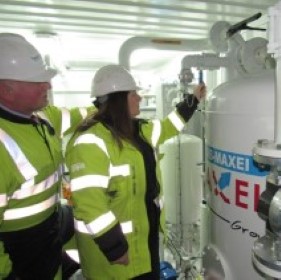Innovation update August 2017
Innovation update - August 2017
Welcome to the latest issue of our quarterly e-newsletter, Innovation Update. In this issue we talk about the latest developments in our key innovation projects and our first annual learning event. We hope you find it of interest.
Celsius
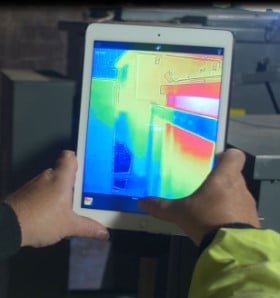
We are now 18 months into our Celsius project and work is progressing well.
The first stage of Celsius is to gather monitoring data from 520 substations. The rollout of temperature monitoring equipment is now almost complete and data is being analysed by our project partner Ricardo to improve our understanding of the relationship between an asset’s temperature, load and environment. The result of this analysis will feed into our ‘thermal ratings tool’ which will enable us to understand what additional capacity can be released from our substations.
The second stage of the project is to test a range of cooling techniques on 100 of the trial substations. In May we held a workshop with other distribution network operators to review the potential trial technologies identified in the project bid and via the Energy Networks Association (ENA) innovation portal.
At the workshop we defined a scoring mechanism for assessing the technologies and agreed that further research will be carried out before the final selection. Following a final round of interviews with suppliers we have now completed the scoring and selection which is available to view on the Celsius website.
As the cooling techniques will be deployed at substations close to homes and businesses, we will carry out a programme of engagement to understand any audible or visual impact of the techniques on our customers. We have now held a number of focus groups to help develop, test and refine the communication materials which we will use to educate customers and which will be incorporated into a survey. Focus groups are a well established and proven platform to explore complex concepts and evaluate proposed communications. This activity will ensure that Celsius research materials are easily understood and are able to deliver the research outcomes, before they are rolled out on a wider scale.
£1.75m reward for First Tier innovation projects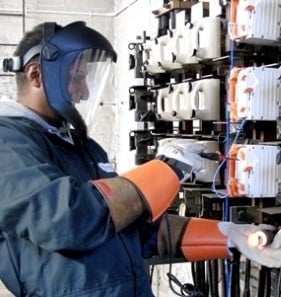
Last month we heard the great news that Ofgem have awarded us £1.75 million from the First Tier Portfolio Reward (FTPR).
The FTPR is awarded to distribution network operators for demonstrating exceptional performance in innovation. Our first tier portfolio of projects funded under Ofgem’s Low Carbon Networks Fund was deemed to be the best for a single licence area.
Our six first tier projects focused on our key innovation themes and ran for several years with numerous colleagues across the business contributing to their success. Some projects have paved the way for our current multi-million pound innovation projects such as Smart Street and Respond, and the Bidoyng Smart Fuse is recognised as an industry ‘game-changer’ in its own right. Hundreds of smart fuses are installed on our network and are now used by other distribution network operators (DNOs), helping restore supplies to customers every day.
You can find out more about our first tier projects on our website or about the FTPR on Ofgem’s website.
Further reward for CLASS project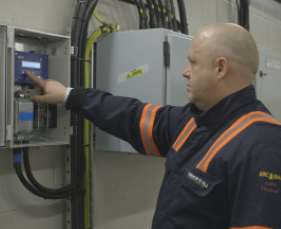
We recently learned that Ofgem has awarded us a further £50k ‘Successful Delivery Reward’ (SDR) for our CLASS project.
This follows the first award last summer for £760k for the successful delivery of the original project. The latest award relates to the project extension which determined the direct benefit to customers from the provision of CLASS services.
The SDR is awarded to electricity licensees like ourselves for successfully delivering innovation projects in a manner that proves the innovation and concepts involved.
As part of the original CLASS project, we proved that ‘automatic voltage controllers’ (AVCs) can be used to reduce demand for electricity, without customers noticing a difference to their service. Earlier this year we awarded a contract to Schneider Electric to provide enhanced AVCs for 260 of our primary substations as part of our plans to make CLASS business as usual.
This ground-breaking approach can be used to help National Grid balance supply and demand for the whole of Great Britain. This means we will be less reliant on expensive coal-fired power stations, which is great news for all electricity customers.
You can find out more about the SDR on Ofgem’s website and more about our projects on the innovation pages of our website.
First annual learning event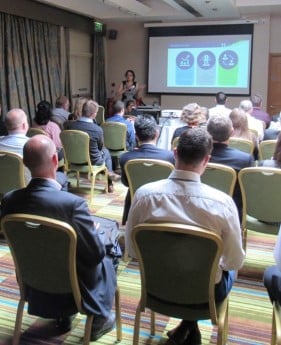
At the start of July we held our first annual innovation learning and dissemination event. Around 80 delegates attended the event in Manchester and listened to presentations on our innovation strategy and our portfolio of projects.
Innovation manager Paul Turner was joined on the ‘main stage’ by engineering and technical director Steve Cox who presented our distribution system operator vision, and innovation engineers Steve Stott and Damien Coyle who presented on our Respond and Celsius projects.
In the afternoon delegates were able to network with our project partners as part of a mini exhibition and choose from breakout sessions on: Smart Street technology, presented by Ben Ingham; load forecasting, presented by Dr Rita Shaw; oil regeneration presented by Dr Geraldine Bryson and customer engagement, presented by Kate Quigley, Tracey Kennelly and our partner Impact Research.
Feedback from delegates was extremely positive with 96% rating the content as good or excellent. You can see all the day’s presentations including our delegate feedback poll on our website.
NIA projects deliver benefits for customers
Last month we published our Network Innovation Allowance (NIA) summary report, and an annual progress report for each of the 18 projects we have registered for this innovation funding. NIA is a set allowance which we receive as part of our price control allowance to fund smaller-scale research, development, and demonstration projects.
Many of our stakeholders will be aware of our larger innovation projects like CLASS, Respond and Celsius, but we also invest in smaller projects which can lead to key improvements in the way we manage our network, such as the Bidoyng Smart Fuse.
We are already able to report some key findings from our NIA programme and we are in the process of transferring elements from some of the projects into business as usual, all of which are helping us become more efficient and deliver benefits to our customers.
- Our Demand Scenarios project has demonstrated better technical approaches to estimating current and future load on the network. We are already able to provide more granular information which has improved our peak load forecasting. This has been used to improve reporting and load-related planning since summer 2016.
- Our Combined Online Transformer Monitoring project has produced a code of practice which is now being used to carry out oil regeneration and extend the lives of our high voltage transformers.
- The learning from our Distribution Asset Thermal Modelling project is being used to help us develop a ‘Thermal Ratings Tool’ as part of the Celsius project which is trialling a range of simple techniques to cool equipment inside substations and make it last longer.
- Our Asset Risk Optimisation project has shown that investment decision tools used by other utilities can be applied to the electricity network to help us improve our investment strategies.
You can read more about our NIA projects on our website.
Useful links
You can find out more detailed information about our strategy and all of our innovation projects using the following links:
-
Our LCN Fund project Smart Street: www.enwl.co.uk/smartstreet
-
Our LCN Fund project Respond: www.enwl.co.uk/respond
-
Our NIC project Celsius: www.enwl.co.uk/celsius
- Our other NIA projects: www.enwl.co.uk/nia
- Meet the Electricity North West innovation team: Meet the team
- The Electricity Networks Association smarter networks portal: www.smarternetworks.org
Or contact us at innovation@enwl.co.uk
· Our LCN Fund project Smart Street: www.enwl.co.uk/smartstreet
· Our LCN Fund project Respond: www.enwl.co.uk/respond
· Our NIC project Celsius: www.enwl.co.uk/celsius
